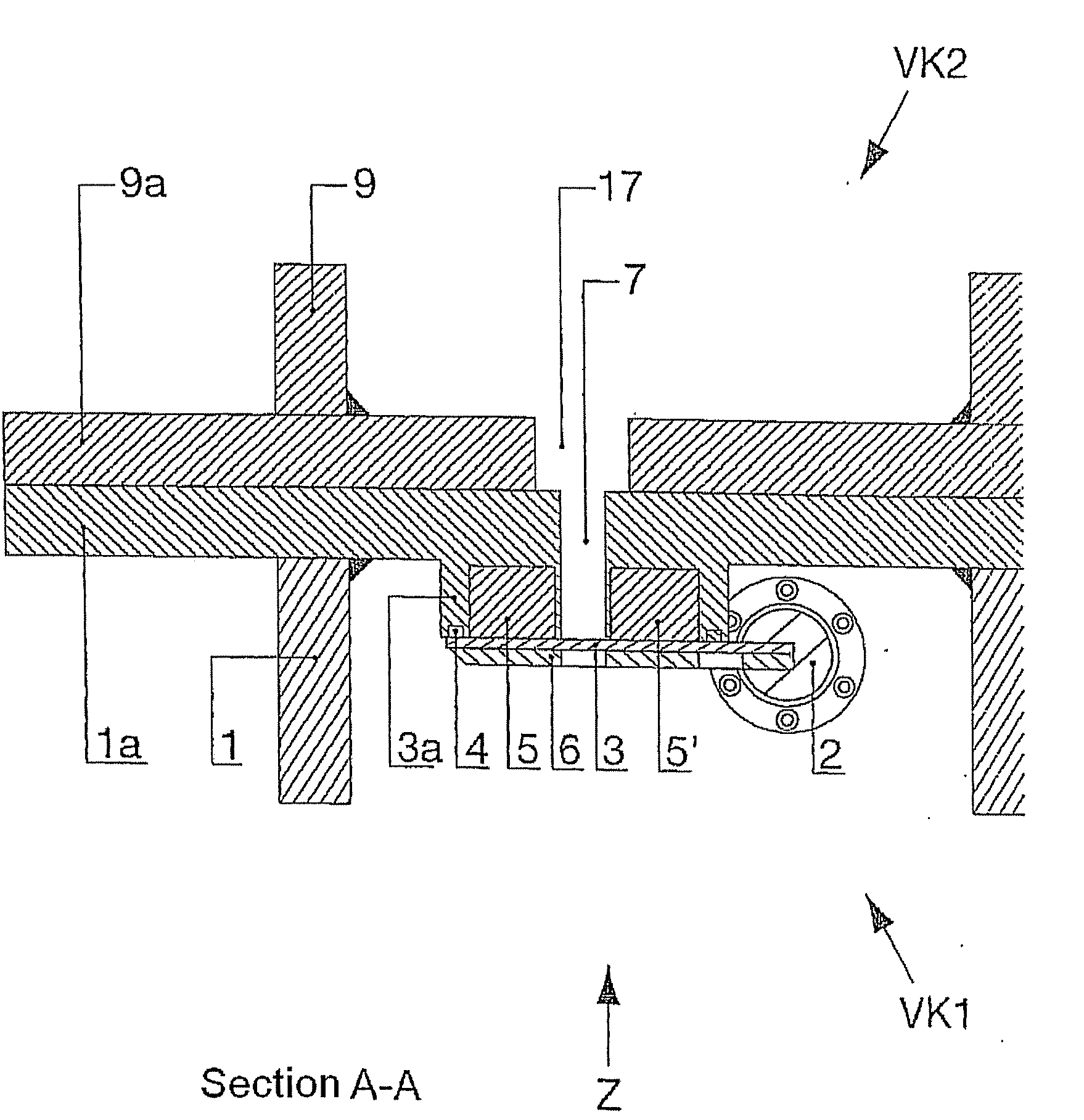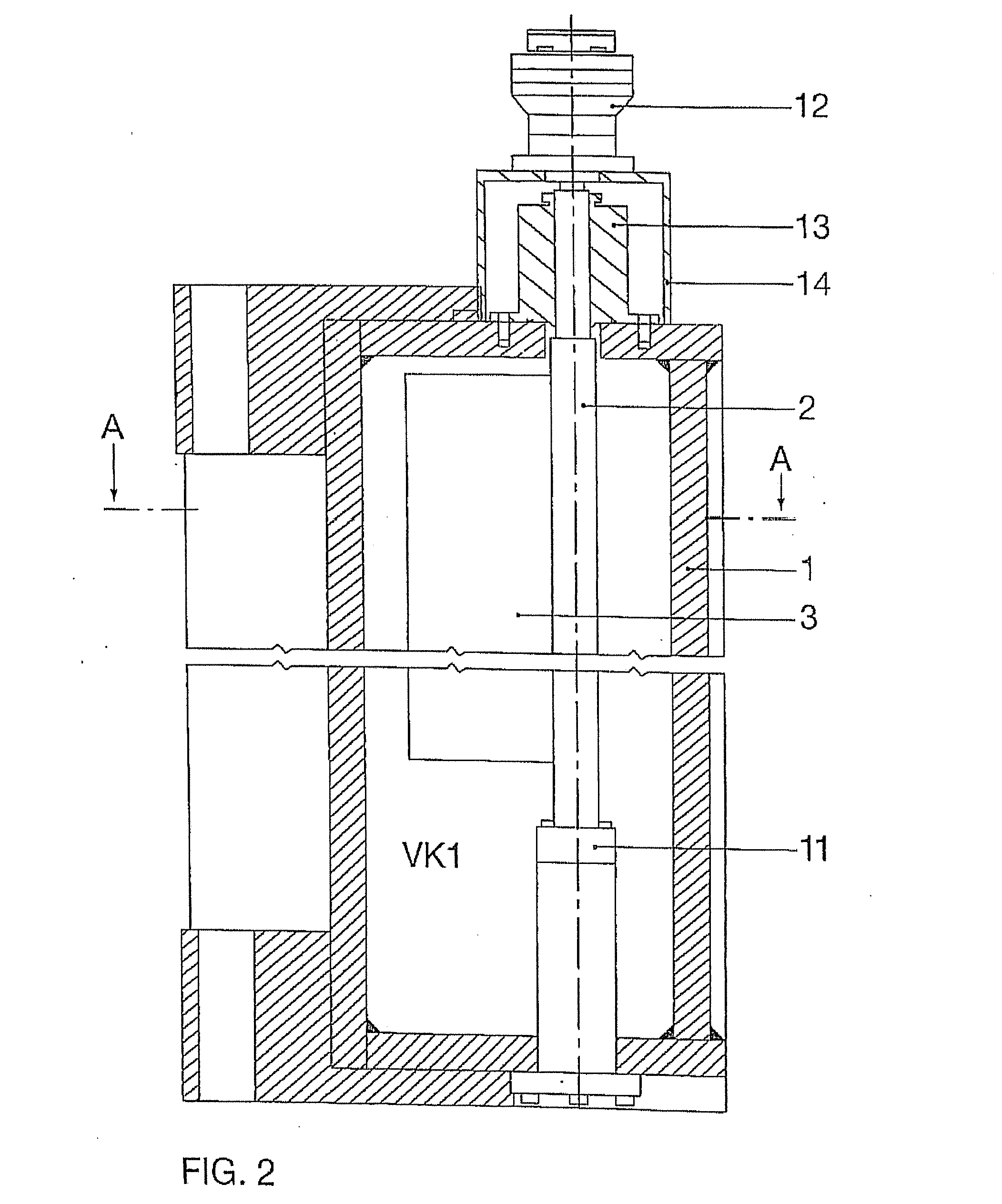Locking Device
a technology of locking device and sealing element, which is applied in the direction of mechanical control device, process and machine control, instruments, etc., can solve the problems of high cost, low sealing force, and difficulty in ensuring the minimum pressure force along the sealing element, so as to achieve simple and reliable sealing of the lock
- Summary
- Abstract
- Description
- Claims
- Application Information
AI Technical Summary
Benefits of technology
Problems solved by technology
Method used
Image
Examples
Embodiment Construction
[0023]A horizontal section A-A and a vertical section perpendicular to A-A of a lock device according to the invention for a lock opening arranged in a wall between a first and a second receptacle are shown in FIGS. 1 and 2. The receptacles are vacuum chambers. This type of lock device is advantageously used in so-called in-line systems for the production of substrates for flat displays. Typically, such substrates are about 1 mm thick, rectangular, with a size of 1000×1200 mm or more. The substrates are guided suspended in the in-line system along a linear or U-shaped path through a number of vacuum chambers, which can be separated from each other by locks. Because of the substrate dimensions, typical lock openings are characterized by an extreme length / width ratio. However, it is understood that the lock device according to the invention can also be used for other lock-opening profiles. The lock device according to the invention can be made from thin-walled and light components, an...
PUM
 Login to View More
Login to View More Abstract
Description
Claims
Application Information
 Login to View More
Login to View More - R&D
- Intellectual Property
- Life Sciences
- Materials
- Tech Scout
- Unparalleled Data Quality
- Higher Quality Content
- 60% Fewer Hallucinations
Browse by: Latest US Patents, China's latest patents, Technical Efficacy Thesaurus, Application Domain, Technology Topic, Popular Technical Reports.
© 2025 PatSnap. All rights reserved.Legal|Privacy policy|Modern Slavery Act Transparency Statement|Sitemap|About US| Contact US: help@patsnap.com



